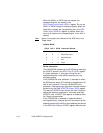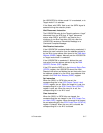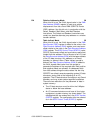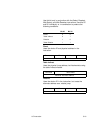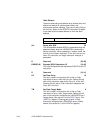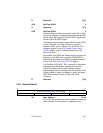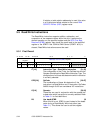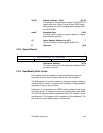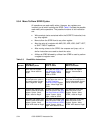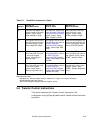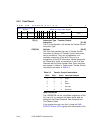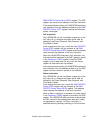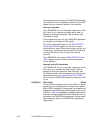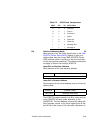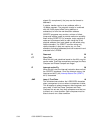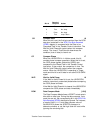
5-24 SCSI SCRIPTS Instruction Set
5.5.4 Move To/From SFBR Cycles
All operations are read-modify-writes. However, two registers are
involved, one of which is always the SFBR. Ta ble 5.3 shows the possible
read-modify-write operations. The possible functions of this instruction
are:
• Write one byte (value contained within the SCRIPTS instruction) into
any chip register.
• Move to/from the SFBR from/to any other register.
• Alter the value of a register with AND, OR, ADD, XOR, SHIFT LEFT,
or SHIFT RIGHT operators.
• After moving values to the SFBR, the compare and jump, call, or
similar instructions are used to check the value.
• A Move-to-SFBR followed by a Move-from-SFBR is used to perform
a register-to-register move.
Table 5.3 Read/Write Instructions
Operator
OpCode 111
Read-Modify-Write
OpCode 110
Move to SFBR
OpCode 101
Move from SFBR
000 Move data into register.
Syntax: “Move data8 to
RegA”
Move data into SCSI First
Byte Received (SFBR)
register. Syntax: “Move
data8 to SFBR”
Move data into register.
Syntax: “Move data8 to
RegA”
001
1
Shift register one bit to the
leftandplacetheresultin
the same register. Syntax:
“Move RegA SHL RegA”
Shift register one bit to the
left and place the result in
the SCSI First Byte
Received (SFBR) register.
Syntax: “Move RegA SHL
SFBR”
Shift the SFBR register one
bit to the left and place the
result in the register. Syntax:
“Move SFBR SHL RegA”
010 ORdatawithregisterand
place the result in the same
register. Syntax: “Move
RegA | data8 to RegA”
OR data with register and
place the result in the SCSI
First Byte Received (SFBR)
register. Syntax: “Move
RegA | data8 to SFBR”
OR data with SFBR and
place the result in the
register. Syntax: “Move
SFBR | data8 to RegA”
011 XOR data with register and
place the result in the same
register. Syntax: “Move
RegA XOR data8 to RegA”
XOR data with register and
place the result in the SCSI
First Byte Received (SFBR)
register. Syntax: “Move
RegA XOR data8 to SFBR”
XOR data with SFBR and
place the result in the
register. Syntax: “Move
SFBR XOR data8 to RegA”



